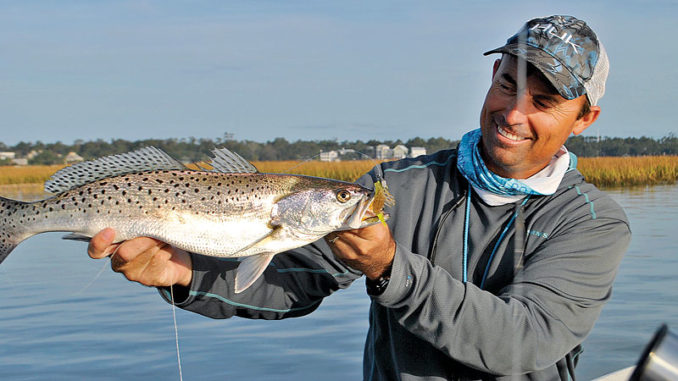
December trout need a patient presentation
With less and less daylight and cooler water temperatures settling in, slowing down your presentation is often key to catching December speckled trout.
“I’m always telling my customers, ‘Slow is the way to go,’” said guide Mike Gallo of Angling Adventures. “And if you’re not catching anything, go even slower.”
Trout move deeper as the water cools. So Gallo likes to target shorelines with easy deepwater access that also feature flats with clear, moving water and signs of baitfish activity.
“If the water temperature is 55 and above, they like shallow water close to deep water,” he said. “That way, if we get a cold front, they’ll just drop down into that deep water without having to go very far.”
But this time of year, especially, Gallo takes his fishing cues from clues provided by the first trout he catches each day.
“If he comes straight to the surface and shakes his head, he’s not cold,” Gallo said. “But if you hook a fish, and he’s fighting, but it’s a lethargic fight and he never comes to the surface and never shakes his head, he’s cold.
“So if I change my technique, I need to change in a slower direction, not in a faster direction. Lots of things can be determined by catching one fish.”
Learn from vomit
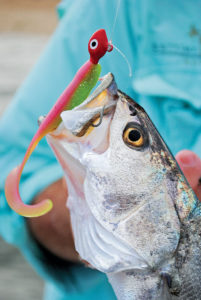
To that end, Gallo’s first speckled trout of the day doesn’t end up on ice. Instead, it goes into the livewell to see if it will provide more clues that might turn an average day of fishing into a really good one.
“Every 10 or 15 minutes, I go and check the livewell. I’m hoping he pukes something up: a crab, a shrimp or a baby fish,” Gallo said. “Then, I get a clue on what he’s feeding on, and I can mimic that.”
If Gallo is fishing with a 3-inch Sparkle Beetle but sees that the trout in his livewell has spit up a 2-inch minnow, Gallo typically downsizes his lures.
“I’m going to go more in that 2-inch range. Because that may be what’s down there on the bottom,” he said. “I happened to catch one, but if my lure really mimics what’s down there I have a better chance of catching more.
“That’s just matching the hatch. Try to actually make out what it is they spit up. Let’s say it’s a pogie — then salt-and-pepper is a great imitation for matching a pogie.”
Use your electronics to find hardbottom
He also pays particular attention to his electronics this time of year. He wants to identify the good, hardbottom that trout prefer. Being able to differentiate the bottom types is a matter of learning how the images display on the screen.
“Let’s say you have one line showing the bottom that’s 1/8-inch thick,” Gallo said. “What that’s telling you is the signal going down from your transducer and bouncing back up is bouncing back up quickly because that bottom is firm.
“But when it draws a bottom that’s 1 1/2 inches thick and real fuzzy, it’s telling you that’s a soft, mushy bottom. And it takes a while for that signal to bounce back.
“So you’ll see clues on your depth finder. Areas with a hardbottom and a gradual slope are gold mines for speckled trout to hang out in.”

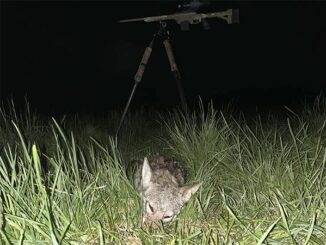
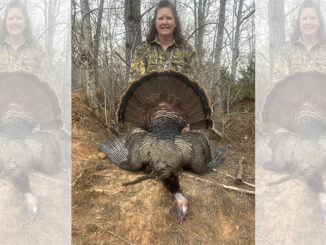
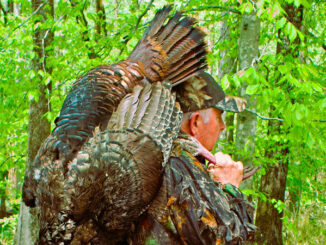

Be the first to comment